Loveday: Crewelwork Fritillary
Before I begin to tell you about embroidering the fritillary in the crewelwork piece "Loveday", I need to explain that I've never seen one. Never. I'm quite a good gardner, I've even won awards in Iowa and I thought I knew my stuff when it came to flowering plants. However, not when it comes to fritillaries!So, having access to the internet (which really is pretty amazing for things like this) I looked it up online and found loads of photographs. I still haven't seen one in 'real life' but now I know what it looks. I always think it's a good idea to know what something looks like you are going to replicate or interpret it in stitch. Pretty, isn't it?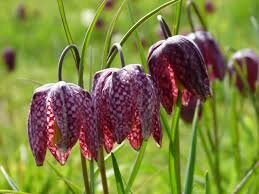 The fritillary I'll be stitching is much larger than the real one - it's a little over 3 inches wide. True to the style of Jacobean crewelwork, the birds, flowers and leaves are not sized in relation to one another in this piece but are joyously extravagant.The fritillary is embroidered using shaded laid stitch. The shading is created by changing the shades of the threads vertically. It's important to ensure the threads are laid parallel to one another and don't slant or tilt as you work across the shape.
The fritillary I'll be stitching is much larger than the real one - it's a little over 3 inches wide. True to the style of Jacobean crewelwork, the birds, flowers and leaves are not sized in relation to one another in this piece but are joyously extravagant.The fritillary is embroidered using shaded laid stitch. The shading is created by changing the shades of the threads vertically. It's important to ensure the threads are laid parallel to one another and don't slant or tilt as you work across the shape.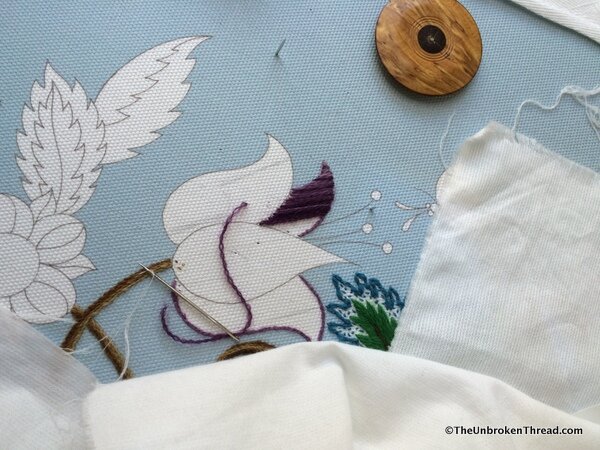 To achieve this I take time to draw light pencil lines inside the shape to guide me as I stitch. I draw the first one "by eye" and then use a ruler to make sure the rest of the lines are parallel. Before I begin to stitch, I look at the lines I've drawn from a distance and ask my husband to look at them as well. If either of us thinks they look "wrong" (slanting one way or the other in relation the the overall shape) I redraw them.
To achieve this I take time to draw light pencil lines inside the shape to guide me as I stitch. I draw the first one "by eye" and then use a ruler to make sure the rest of the lines are parallel. Before I begin to stitch, I look at the lines I've drawn from a distance and ask my husband to look at them as well. If either of us thinks they look "wrong" (slanting one way or the other in relation the the overall shape) I redraw them.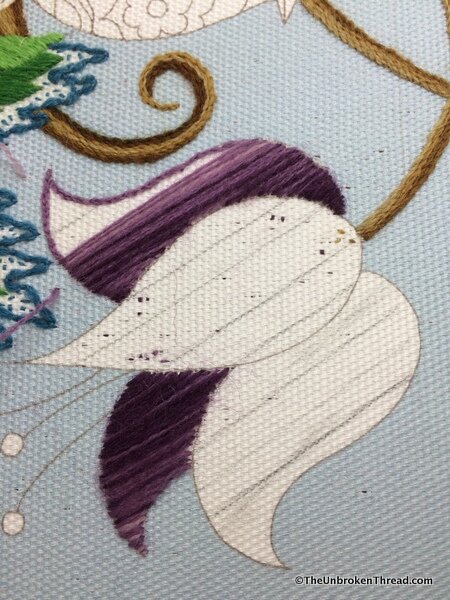 I always visualise where the shades of color will shift inside the shape before I begin. Generally I look at the shape and decide that, for example, a third of the shape on the far left will be the darkest purple (as in the photo above). It's then a matter of filling in that area with the darkest shade (usually only 5 or 6 stitches) and stitching back towards the middle, adding one strand of the medium shade every 4-6 stitches. Then return to the darkest shade of a few stitches and add another medium purple stitch. Then add 3-5 stitches followed by 2 or 3 medium ones.
I always visualise where the shades of color will shift inside the shape before I begin. Generally I look at the shape and decide that, for example, a third of the shape on the far left will be the darkest purple (as in the photo above). It's then a matter of filling in that area with the darkest shade (usually only 5 or 6 stitches) and stitching back towards the middle, adding one strand of the medium shade every 4-6 stitches. Then return to the darkest shade of a few stitches and add another medium purple stitch. Then add 3-5 stitches followed by 2 or 3 medium ones.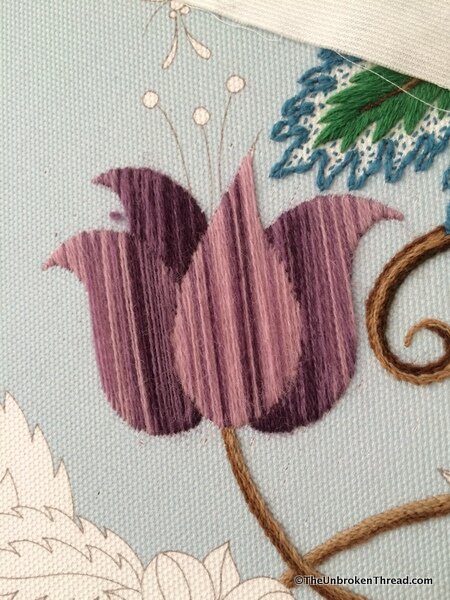 Laid shading isn't something for which there is a formula. The trick is to add in the second shade (either going lighter or darker) a thread or two at a time until you have shifted from one shade to the next.As with all laid stitches, you go down through the fabric at one point and come up directly next to the place where the needle went down. You do NOT run the thread all the way under the shape to the opposite side. This means that shaded laid stitch is a very economical stitch.
Laid shading isn't something for which there is a formula. The trick is to add in the second shade (either going lighter or darker) a thread or two at a time until you have shifted from one shade to the next.As with all laid stitches, you go down through the fabric at one point and come up directly next to the place where the needle went down. You do NOT run the thread all the way under the shape to the opposite side. This means that shaded laid stitch is a very economical stitch.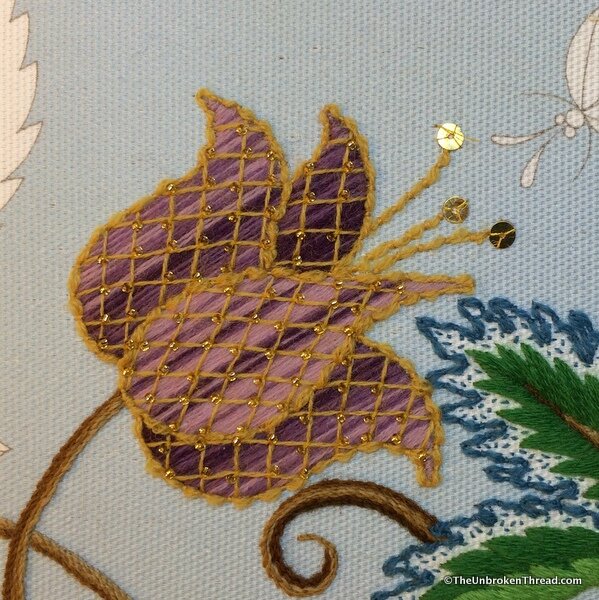 Once the shading was finished, there were two decorative stitches to do before adding the beads. The first was the trellis. In this case I laid the trellis one section at a time. The next step was couching down a double thread around each section of the fritillary. Lastly, I added the tiny gold beads at the cross points of the trellis and the gold spangles.Isn't it a pretty thing?
Once the shading was finished, there were two decorative stitches to do before adding the beads. The first was the trellis. In this case I laid the trellis one section at a time. The next step was couching down a double thread around each section of the fritillary. Lastly, I added the tiny gold beads at the cross points of the trellis and the gold spangles.Isn't it a pretty thing?
